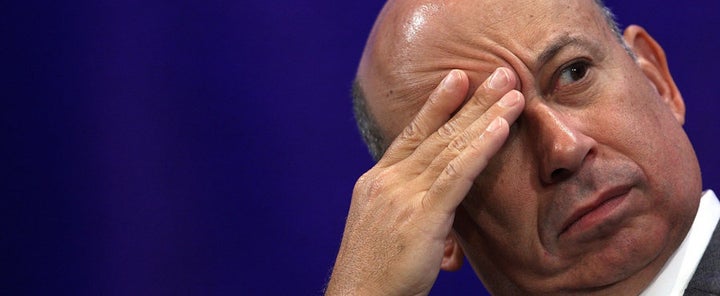
Economists seem to specialize in bad logic, or so one might think based on the recent debate over breaking up the big banks. Former Treasury Secretary Larry Summers, who is currently President Obama's top economic advisor, pointed out on the Lehrer News Hour on Friday that failures of small banks can present as much of a problem or more than the failure of a huge "too big to fail" institution (TBTF). He specifically noted the savings and loan crisis of the 80s.
This point is true. With bad regulation, the simultaneous collapse of many small banks can pose as much a threat to financial stability as the failure of even the largest bank. However, this fact has nothing to do with the opposite proposition - that TBTF banks pose special problems to the financial system.
The basic point is straightforward: by definition a TBTF bank will not be allowed to fail. The losses to its creditors are deemed too dangerous to the financial system and/or the economy as a whole.
This implies two things. First, because creditors know that the government will stand behind the debt of a TBTF in a crisis, they view its debt as less risky than the debt of other institutions. This means that the TBTF banks will be able to borrow at lower cost than other institutions. CEPR did a short paper last fall that suggested that the size of this TBTF subsidy to large banks could be as much as $34 billion a year.
The other implication is that TBTF banks will be able to take more risks than other banks. If other banks were perceived as engaging in risky ventures, creditors would shy away, thereby depriving them of the capital they need. However, because creditors know that the government will bail them out if a TBTF bank gets in trouble, they will keep the money flowing regardless of how risky the activities of the bank. This is a recipe for many more bailouts.
Paul Krugman and others have pointed out that effective regulation, like that exercised in Canada, can prevent TBTF banks from engaging in risky behavior. It can also, in principle, prevent these banks from profiting from the TBTF subsidy. But Canada is not the United States. We have to ask whether it is likely that our regulators will clamp down on activities that are very profitable for TBTF institutions, even if they pose great risks to the financial system.
Let's imagine a hypothetical situation. Suppose that a regulator wants to clamp down on risky actions by the financial industry. Let's call that regulator "Brooksley Born." We'll assume that she is head of the Commodities Futures Trading Commission. Let's imagine that she wants to regulate the sale of credit default swaps and other derivative instruments.
Further, let's assume that there are people in top positions at the Treasury, the Federal Reserve Board, and the Securities and Exchange Commission, all of whom have close contacts with the executives of the TBTF institutions. We'll call those people "Robert Rubin", "Larry Summers", "Alan Greenspan" and "Arthur Levitt." These powerful officials might try to prevent Brooksley Born from effectively regulating derivatives. They would probably question her understanding of modern finance, since very smart people at the TBTF institutions say that the current system for trading derivatives is just fine without additional regulation. They might also ridicule her proposed regulations of derivatives, which for purposes of our hypothetical scenario we can assume is not perfect. Since these powerful officials hold top positions in government, they would likely be able to prevent Brooksley Born from regulating derivatives.
Regulation in the real world looks like this hypothetical scenario. There are never unambiguous cases where risky actions are evident to all. Big banks pay smart people multi-million dollar salaries to explain why their actions are perfectly safe. These smart people can even make an $8 trillion housing bubble appear like a perfectly normal housing market.
If we want regulators who have a chance against the institutions they are regulating, we should not want institutions that are as large and politically powerful as Goldman Sachs, JP Morgan, Citigroup and the other TBTF institutions. Regulators can always make stupid mistakes and small banks acting collectively can also be a substantial force against effective regulation. But, given the power of the large banks at present, we are starting the game with a rigged deck. If it comes to placing a bet between a vigilant regulator pushing sound regulation and the TBTF banks pursuing profits, the smart money is with the banks.
